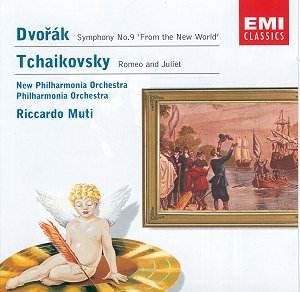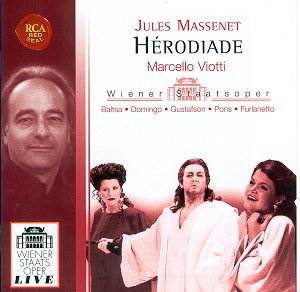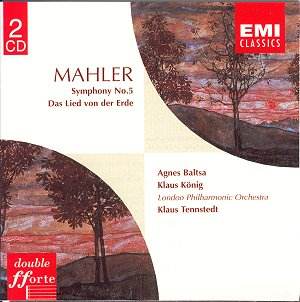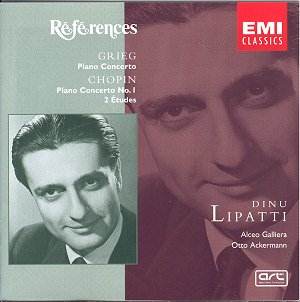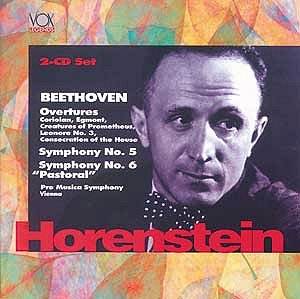 Composer: Ludwig van Beethoven
Composer: Ludwig van Beethoven
Works: Symphony No. 5 in c minor, op. 67; Symphony No. 6 in F, op. 68 “Pastoral”; Overtures: Coriolan, Egmont, Prometheus, Leonore III, Consecration of The House
Performers: Pro Musica Symphony, Vienna; Jascha Horenstein (conductor)
Recording: Mono recordings made between 1953 and 1958
Label: VOX LEGENDS VOX2 7808 2
Ludwig van Beethoven’s symphonic oeuvre is a cornerstone of Western classical music, with the Fifth and Sixth Symphonies serving as prime examples of his innovative spirit and emotional depth. Composed during a tumultuous period in his life, these works not only showcase his mastery of form and orchestration but also reflect a deeper philosophical and emotional exploration. The recent reissue of these symphonies under the baton of Jascha Horenstein, with the Pro Musica Symphony in Vienna, offers an opportunity to revisit these iconic performances, originally captured in the 1950s, a time when Beethoven interpretation was undergoing significant evolution.
Horenstein’s interpretation of the Fifth Symphony is marked by a methodical yet passionate approach. He steers clear of excessive dramatization, opting instead for a controlled intensity that reveals the underlying structure of Beethoven’s argument. The first movement unfolds with a sense of inevitability, the famous four-note motif articulated with rhythmic precision. Horenstein’s pacing allows the thematic development to resonate, creating a sense of tension that builds toward the movement’s climax. While some may yearn for the visceral excitement offered by conductors like Carlos Kleiber or the monumental grandeur of Otto Klemperer, Horenstein’s careful delineation of dynamics and articulation provides a compelling alternative, emphasizing the symphonic narrative rather than succumbing to mere spectacle.
In the “Pastoral” Symphony, Horenstein’s deft handling of tempo conveys a vivid sense of place and mood, capturing the essence of nature that Beethoven so vividly conveys. The opening movement is buoyant and lively, and Horenstein ensures that the Viennese players infuse the score with an infectious joy that suggests an invigorating country stroll. Distinct accents and a vibrant interplay among the woodwinds enhance the pastoral imagery without sacrificing the work’s inherent tension. The second movement, marked by its contrasting serenity, is rendered with a delicate touch that allows the melodies to breathe, reflecting Horenstein’s understanding of the classical roots from which Beethoven’s style emerged.
The recording quality, while limited by the mono format, exhibits a commendable clarity that preserves the integrity of the performance. The sound engineering effectively captures the nuances of orchestral textures, allowing for an appreciation of the interplay between strings and woodwinds. This is particularly evident in the overtures, where Horenstein’s interpretations reveal the dramatic undercurrents inherent in works like “Coriolan” and “Egmont.” The former showcases an intense romanticism, carefully layered with Horenstein’s characteristic restraint, while the latter resonates with a profound sense of urgency, effectively utilizing the mono sound to create a cohesive orchestral palette.
Horenstein’s performances of Beethoven’s overtures provide further insight into his interpretative ethos. “Leonore III,” for instance, is infused with a dramatic arc that mirrors the emotional depth of the symphonies, while “Prometheus” offers a lighter contrast, demonstrating Horenstein’s versatility. The engineering, particularly in the later recordings such as “The Consecration of the House,” exhibits a richer reverberation, enhancing the orchestral resonance while maintaining a balance that does not overwhelm the listener.
This collection represents a significant contribution to the legacy of Beethoven interpretation, showcasing Horenstein’s unique artistry and thoughtful approach. While it may not rival the visceral excitement of more famous recordings, it certainly offers a deep and engaging experience rooted in musical integrity. The performances are imbued with a sincerity that resonates throughout, revealing the complexity and depth of Beethoven’s vision in a manner that is both enlightening and enjoyable. An essential listening experience for those wishing to explore the subtleties of these monumental works.
